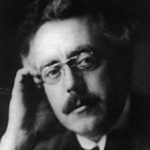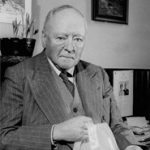
Sun. 1 Sept. Events
Schedule
11:00 am
Australian Discovery Orchestra Chamber Soloists*
ADO Principals and guest artists perform the chamber music of Arnold T. E. Bax and his contemporaries.
An Elegaic Trio
Arnold E. T. Bax
for flute, viola and harp (1916)
First performed at London’s Aeolian Hall on 26th March 1917; flautist Albert Fransella (fl.), Waldo Warner (vla.) and Miriam Timothy (hp.)
Divertimenti
Frank Bridge
for flute, oboe clarinet and bassoon (1938)
Pastorale et Arlequinade
Eugène Goossens
for flute, oboe and piano (1924)
 Clarinet Sonata in D major
Clarinet Sonata in D major
Arnold E. T. Bax
for clarinet and piano (1934)
First performed in London, 17th June 1935; Frederick Thurston (cl.) and Harriet Cohen (pfte.) The Sonata is in three movements.
Clarinet – Anne Brisk
Anne studied at the NSW Conservatorium of Music High School, Canberra School of Music (Australian National University), and the Conservatoire Superieure de Musique de Paris. Her professional performance career has included working with Sydney Symphony Orchestra, Australian Chamber Orchestra, Tasmanian Symphony Orchestra, Auckland Philharmonia Orchestra and Australia Ensemble. She is also committed to music education and as a member of staff at Scotch College, Melbourne, contributing to the teaching of instrumental, orchestral and chamber music studies.

2:30 pm
Australian Discovery Orchestra
Conductor – Kevin Purcell

Arnold E.T.Bax
Tintagel for orchestra
Tintagel (1917) is today perhaps the best-known – if not only orchestral work – by Sir Arnold Bax ever heard today on the concert platform. This evocative and deeply felt tone-peom was finished in the same year as his Ballet Russes inspired stage work, From Dusk ‘Till Dawn, and inspired by Tintagel Castle situated on the Atlantic coast of Cornwall, England. The semi-programmatic work conveys, if not conjures, the dramatic legends of King Arthur and King Mark. But Bax’s tone-poem can be read as a much darker commentary on his personal situation in 1917; suggestive of the beginnings of his life-long affair with the British pianist, Harriet Cohen, as well as deeply-felt reaction to the 1916 Easter Uprising in Dublin. Bax’s response and reaction to this massacre is also heard in his An Elegaic Trio.

Frank Bridge
Lament (for Catherine, aged 9 “Lusitania” 1915)
On May 7, 1915, a German U-Boat fired torpedoes at the RMS Lusitania, a civilian ocean liner, and sank it in the Atlantic. 1,195 people died, the incident rousing international condemnation as non-naval vessels were presumed to be non-combative and not to be engaged. It is generally accepted that the sinking of the Lusitania was a catalyst for America entering the War several years later. Among the lost was Catherine, a 9-year-old girl who died with her family. The loss impelled Bridge to compose an elegy, creating what is, possibly, the most beautiful piece of music ever written about a humanitarian nautical disaster.

Arnold E.T.Bax
From Dusk ‘Till Dawn
(Australian premiere performance)
Originally titled ‘Between Twelve and Three’ (1917) this performance includes all the music from Bax’s Ballet Ruses inspired work for his ballet in one act. The ballet was produced in December 1917 with the enthusiastic balletomane, Mrs. Christopher Lowther (who also commissioned the work) – later to become Lady Cholmondley – in the lead.
Some of Bax’s music of this score was given in a concert performance by the young Adrian Boult on 4 March 1918, and the work was seen again on stage later that year. It then disappeared until revived in a concert at the 1982 Petworth Festival, UK. This is the first time the score has been played anywhere since then.
The story of the ballet is based around some china figures who lose their immobility one summer night.
